India December 2023 to January 2024
Kolkata and Chennai
Kolkata: Victoria Memorial, Academy of Fine Arts, and Indian
Classical Music
15 December Kolkata
I caught an EV taxi to the Victoria Memorial, one of
Indiaís most beautiful buildings. Lord Curzon, Viceroy of British India,
conceived the idea of this grand building to honor Queen Victoria in 1901.
Construction didnít begin until 1906 and lasted to 1921. I paid the foreignerís
entry of Rs. 500, then strolled the grand south promenade, passing a triumphal
arch topped by an equestrian statue of King Edward VII. Extensive gardens and
pools surrounded the domed Victoria Memorial, clad in white marble. From the
entrance on the north side I made my way to the vast space under the central
dome presided by a statue of a young Queen Victoria. Nearby halls display
cannons, surveying instruments, historic and modern paintings, and a variety of
other historic artifacts. Oddly the large history museum that I had visited on
previous occasions was closed. Lastly I climbed up to the balcony overlooking
the south promenade for the expansive view.
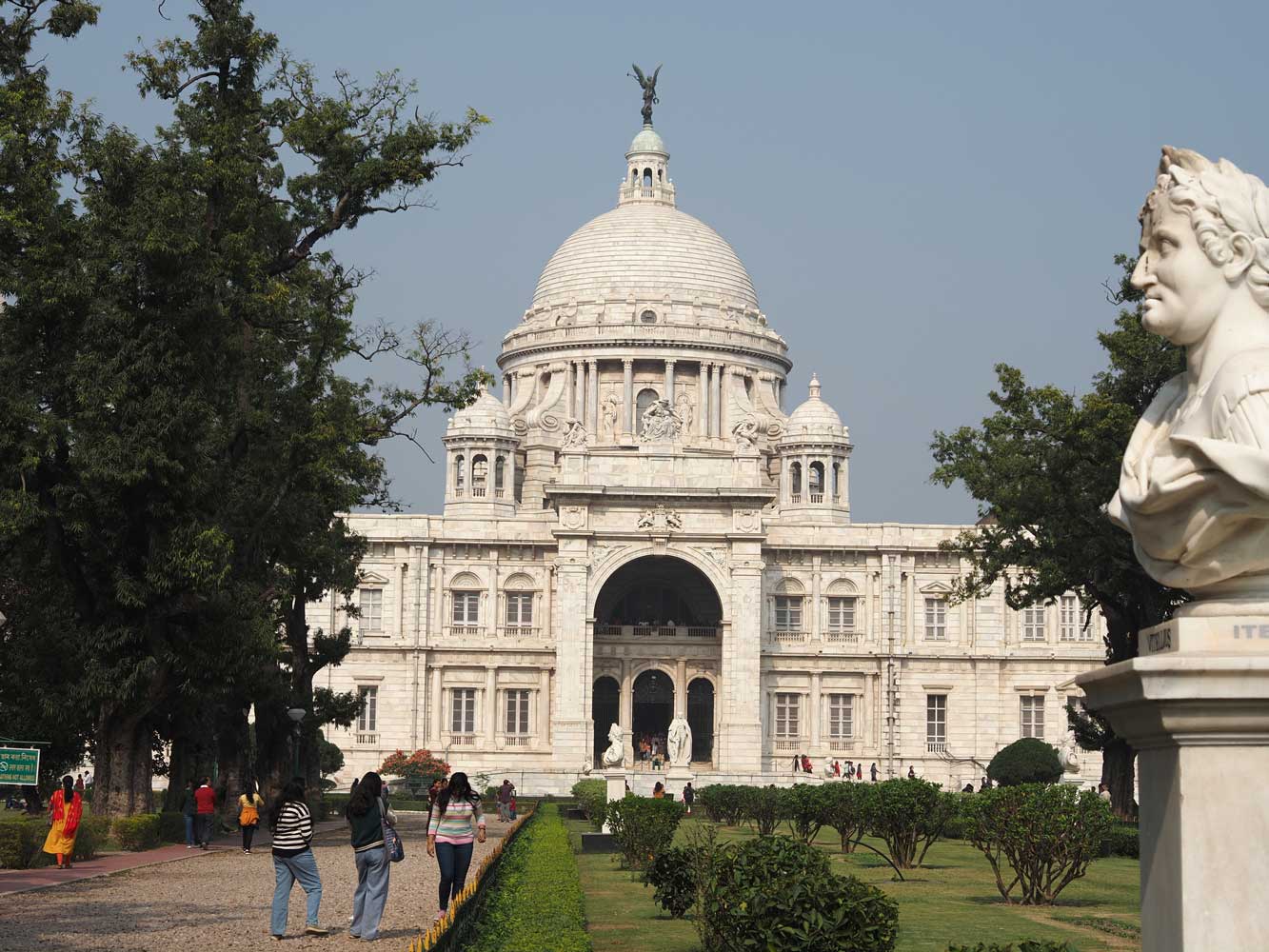
The grand promenade
on the south side of Victoria Memorial
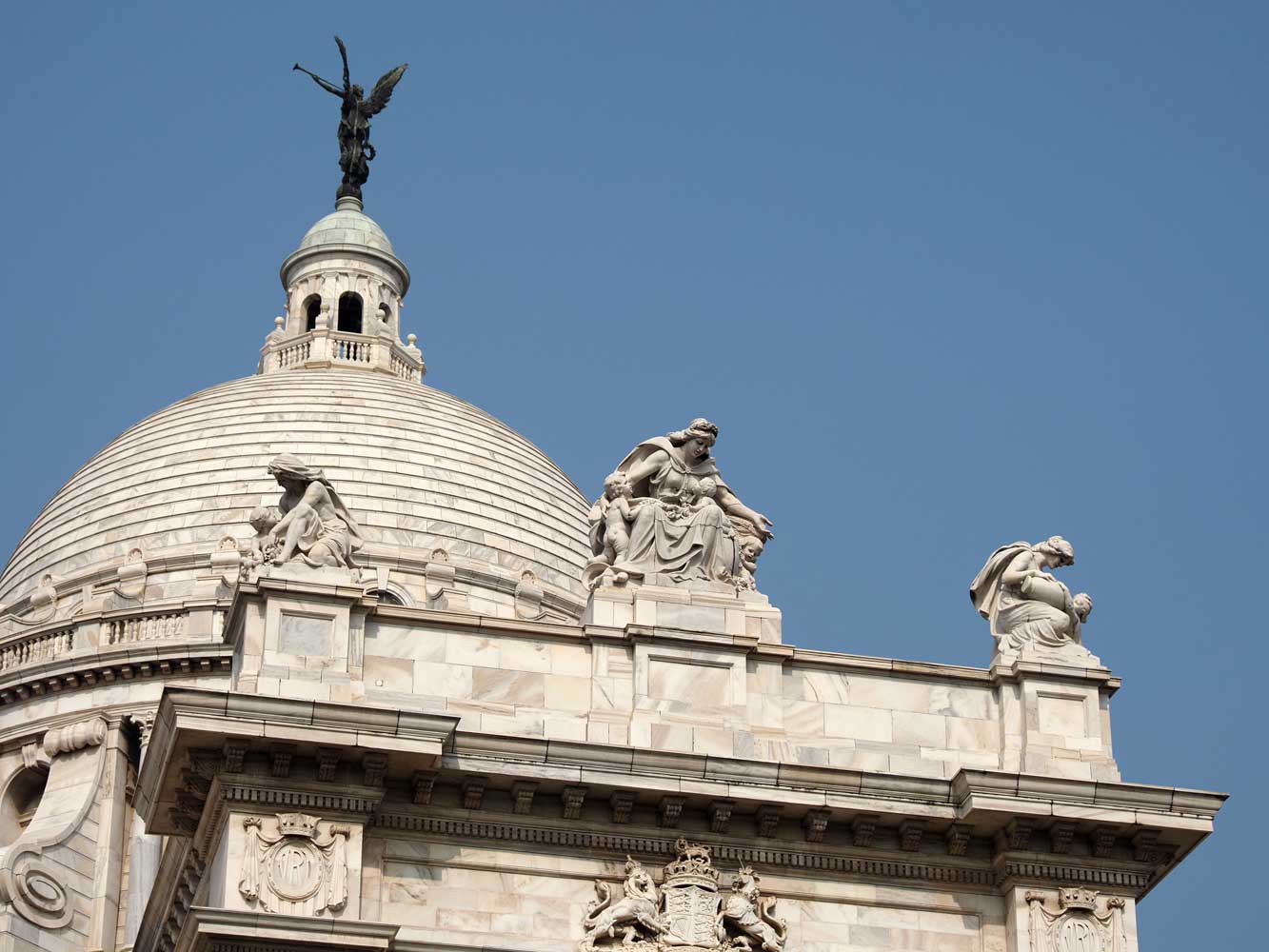
The Angel of
Victory stands 4.9 meters (16 feet) high atop the central dome.
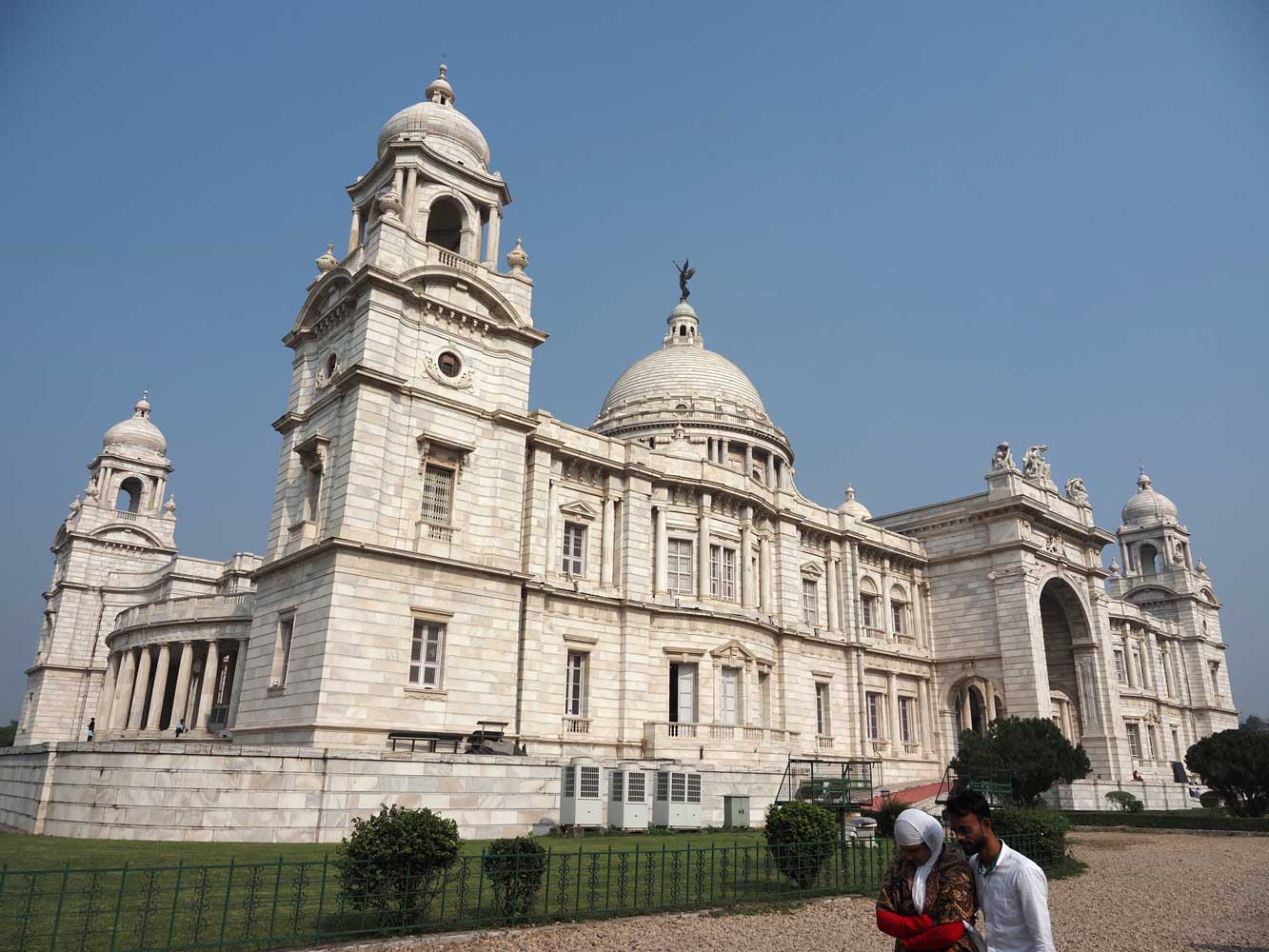
Victoria Memorial
is the largest monument to a monarch in the world. (View from the southwest)

A statue of
Queen Victoria in her coronation robes stands under the central dome.
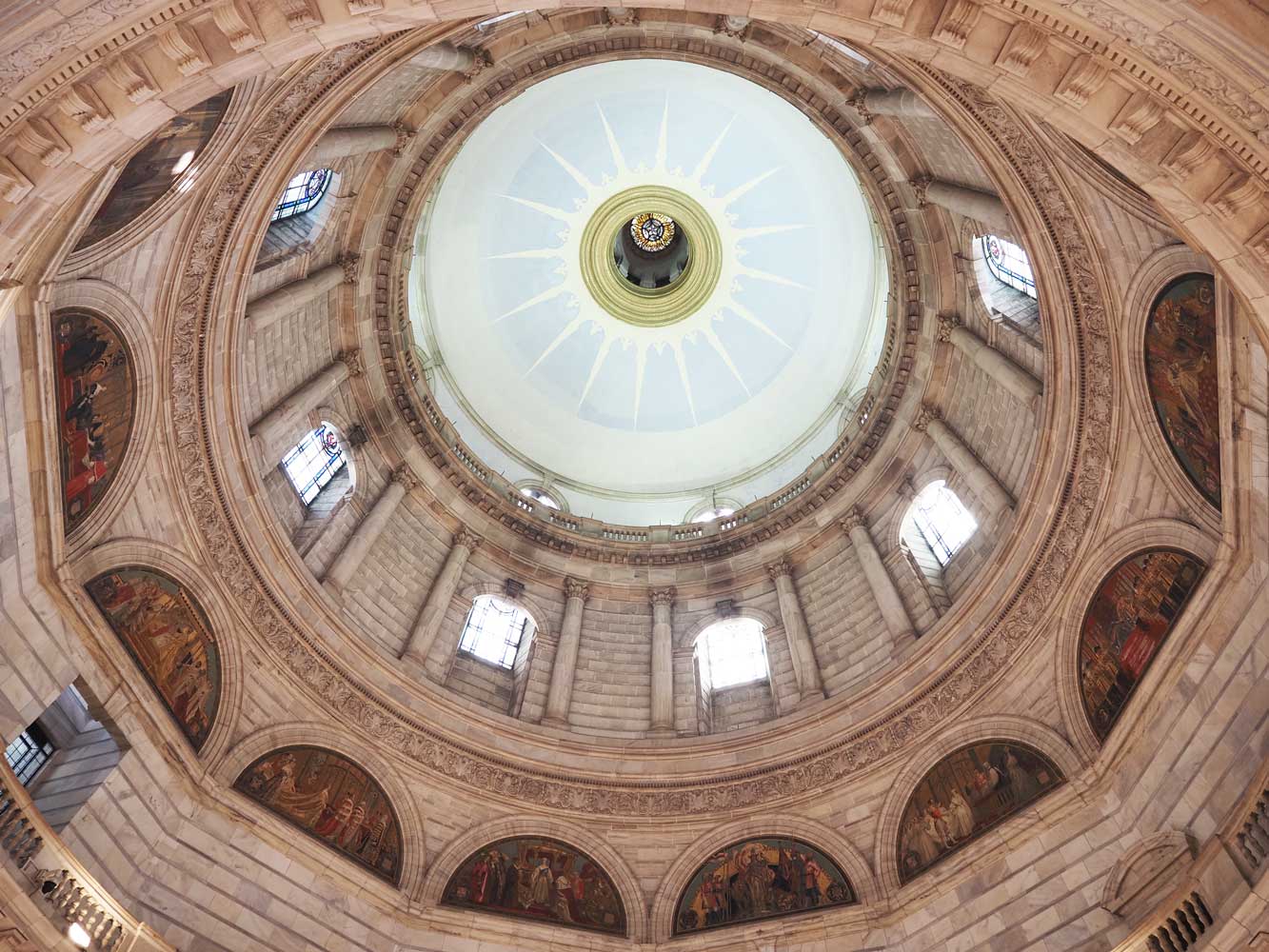
Twelve canvas
lunettes inside the central dome celebrate key moments in Victoriaís life.

Lunettes detail
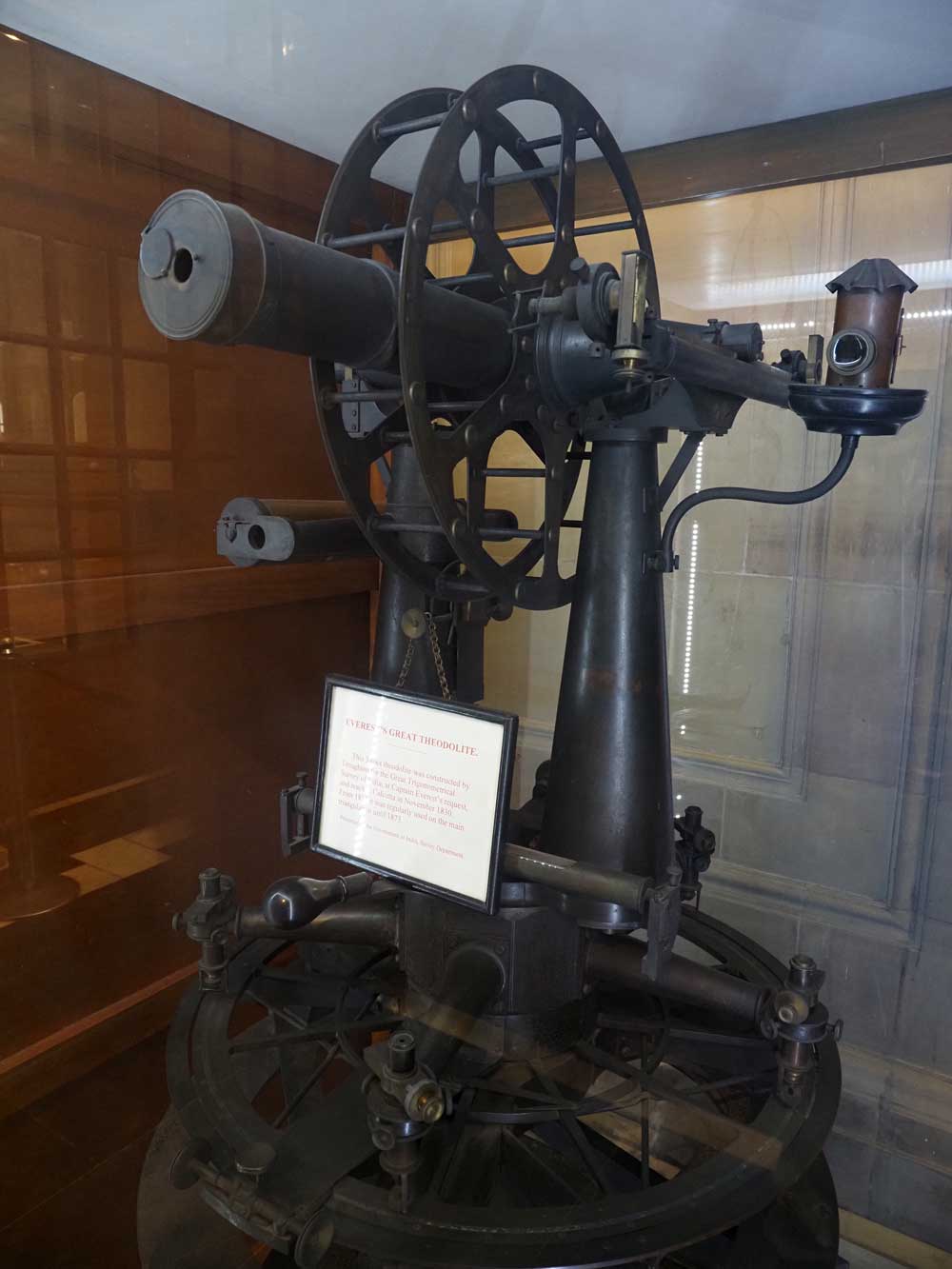
Everestís Great
Theodolite, constructed by Troughton for the Great Trigonometrical
Survey of
India at Captain Everestís request, and reached Calcutta in 1830. It stands
3 feet tall.

The Jaipur Procession is believed to be one of the largest oil
paintings in
the world at 23 feet wide by 16.5-ft high. Russian painter Vasily
Vereshchagin
depicts a procession in front of the Amber Chowpar in Jaipur in
1876.

Calcutta from Garden Reach (oil on canvas, 1834) by William Daniell
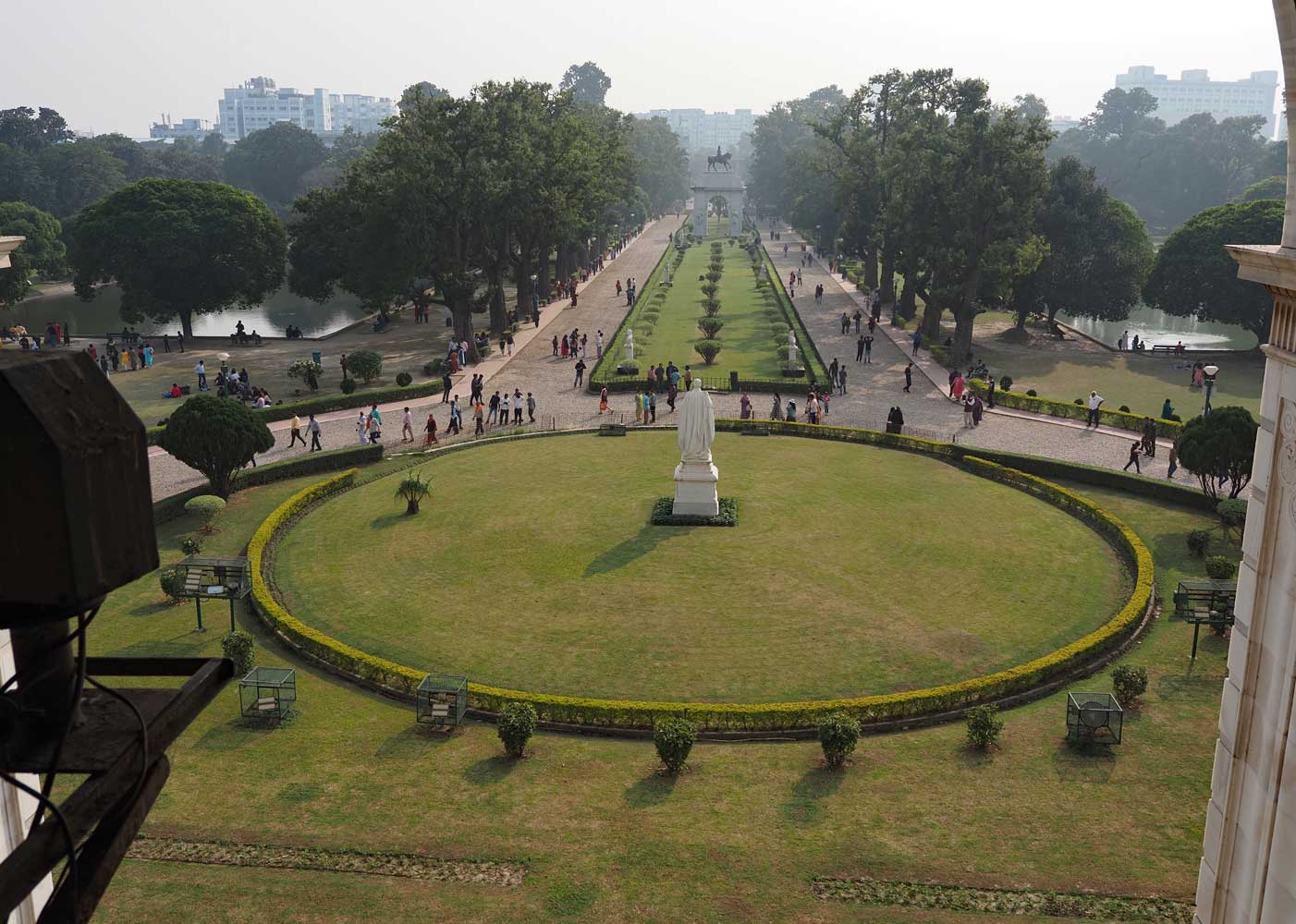
View south from the
balcony
A short walk east through
the gardens and across Cathedral Road brought me to the Academy of Fine Arts.
Kolkata has many artists and they fill the galleries here with their paintings,
drawings, and sculptures in shows that change weekly. I enjoyed seeing the three
group and two solo shows with a great many styles.

22nd International
Art Exhibition by Nandan Santiniketan at the Academy of Fine Arts

Relationship
(terracotta) by Manjari Srivastava
(Exposition: 2nd Art Exhibition of
Rabindra Bharati University Visual Arts 1990)
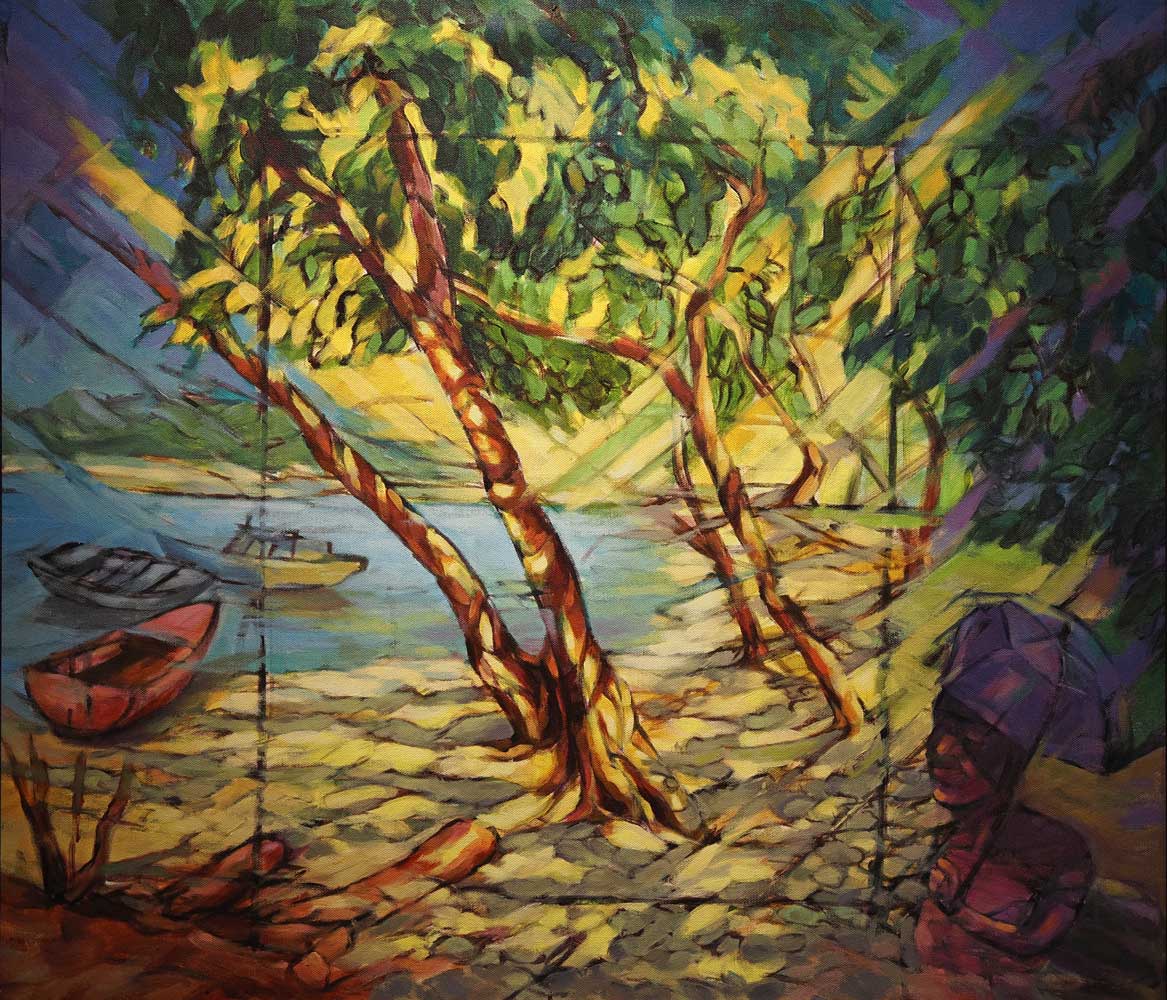
Light on Sand
(acrylic on canvas) by Ali Akbar
(Exposition: 2nd Art Exhibition of Rabindra
Bharati University Visual Arts 1990)

Radha
(acrylic on canvas) by Bijoy Chakraborty
(Exposition: 2nd Art Exhibition of
Rabindra Bharati University Visual Arts 1990)
Afterward I crossed
Chowringree Road to Haldiram, a popular restaurant. Here one orders and pays at
a counter, then takes the receipt to the food line where staff dish out the
orders. I went with a filling and spicy shahi thali along with a very sweet
lassi kesaria and a masala tea, the latter two served in disposable clay
containers. Next I headed northeast to ICCR (Indian Council For Cultural
Relations) to hear four concerts of Indian classical music.
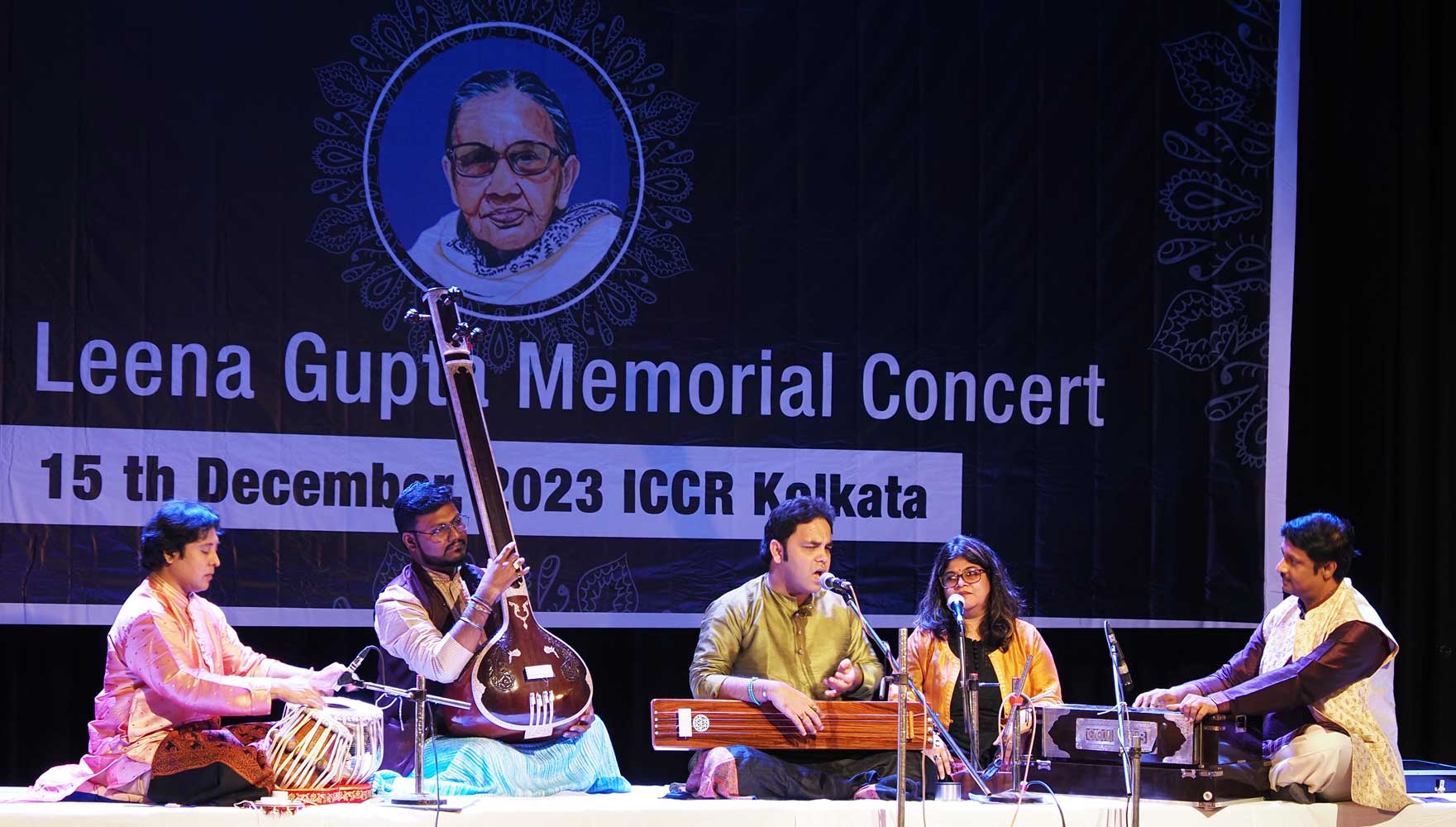
Arshad Ali Khan
(center) is the main vocalist.

Pandit Arup
Chattopadhyay (center) plays tabla with Anjishnu Mukherjee (left) on tabla and
Pandit Sanatan Goswami (right) on harmonium

Sitar Jugalbandi
Pandit Ashim Chowdhury (left) and Dibojyoti Gupta (right) on sitar with Pandit
Parimal Chakraborty on tabla
On to Kolkata: Dance, Art, Shopping, and
Temple Visits
Return to Contents
















